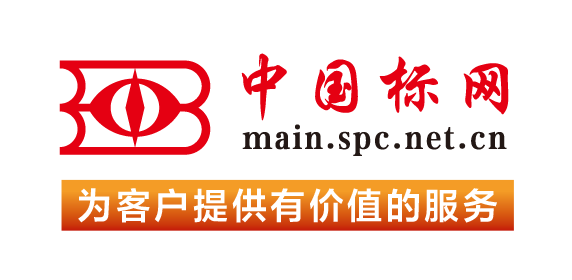【国外标准】 Standard Test Methods for Cathodic Disbonding of Pipeline Coatings
本网站 发布时间:
2024-02-28
开通会员免费在线看70000余条国内标准,赠送文本下载次数,单本最低仅合13.3元!还可享标准出版进度查询、定制跟踪推送、标准查新等超多特权!
查看详情>>
适用范围:
4.1 Breaks or holidays in pipe coatings may expose the pipe to possible corrosion, since after a pipe has been installed underground, the surrounding earth will be more or less moisture-bearing and it constitutes an effective electrolyte. Damage to pipe coating is almost unavoidable during transportation and construction. Normal soil potentials as well as applied cathodic protection potentials may cause loosening of the coating, beginning at holiday edges, in some cases increasing the apparent size of the holiday. Holidays may also be caused by such potentials. While apparently loosened coating and cathodic holidays may not result in corrosion, this test provides accelerated conditions for loosening to occur and therefore gives a measure of resistance of coatings to this type of action.4.2 The effects of the test may be evaluated by either physical examination or monitoring the current drawn by the test specimen and both of these two. Usually there is no correlation between the two methods of evaluation but both methods are significant. Physical examination consists of assessing the effective contact of the coating with the metal surface in terms of observed differences in the relative adhesive bond. It is usually found that the electrically stressed area propagates from the holiday to a boundary where the loosened coating leaves off for the more effective contact or bond attributed to an original condition throughout the specimen before electrical stressing was applied. Assumptions associated with test results include the following:4.2.1 Attempting to loosen or disbond the coating at a new test hole made in the coating in an area that was not immersed represents maximum adhesion or bond as measured by the lifting technique used, and that the same lifting technique can be used at a test hole that was immersed thereby providing a means of comparing relative resistance to lifting.4.2.2 Any relatively lesser bonded area at the immersed test holes in the coating was caused by electrical stressing and was not attributable to an anomaly in the application process. Ability to resist disbondment is a desired quality on a comparative basis, but disbondment per se in this test is not necessarily an adverse indication. The virtue of this test is that all dielectric type coatings now in common use will disbond to some degree thus providing a means of comparing one coating with another. Bond strength is more important for proper functioning of some coatings than others and the same measured disbondment for two different coating systems may not represent equivalent loss of corrosion protection.4.2.3 The amount of current in the test cell is a relative indicator of the extent of areas requiring protection against corrosion; however, the current density appearing in this test is much greater than that usually required for cathodic protection in natural, inland soil environments.1.1 These test methods cover accelerated procedures for simultaneously determining comparative characteristics of insulating coating systems applied to steel pipe exterior for the purpose of preventing or mitigating corrosion that may occur in underground service where the pipe will be in contact with inland soils and may or may not receive cathodic protection. They are intended for use with samples of coated pipe taken from commercial production and are applicable to such samples when the coating is characterized by function as an electrical barrier.1.2 This test method is intended for testing coatings submerged or immersed in the test solution at room temperature. When it is impractical to submerge or immerse the test specimen, Test Method G95 may be considered where the test cell is cemented to the surface of the coated pipe specimen. If higher temperatures are required, see Test Method G42. If a specific test method is required with no options, see Test Method G80.1.3 The values stated in SI units to 3 significant decimals are to be regarded as the standard. The values given in parentheses are for information only.1.4 This standard does not purport to address all of the safety concerns, if any, associated with its use. It is the responsibility of the user of this standard to establish appropriate safety, health, and environmental practices and determine the applicability of regulatory limitations prior to use.1.5 This international standard was developed in accordance with internationally recognized principles on standardization established in the Decision on Principles for the Development of International Standards, Guides and Recommendations issued by the World Trade Organization Technical Barriers to Trade (TBT) Committee.
标准号:
ASTM G8-96(2019)
标准名称:
Standard Test Methods for Cathodic Disbonding of Pipeline Coatings
英文名称:
Standard Test Methods for Cathodic Disbonding of Pipeline Coatings标准状态:
Active-
发布日期:
-
实施日期:
出版语种:
- 推荐标准
- ASTM 51401-21 Standard Practice for Use of a Dichromate Dosimetry System
- ASTM 51956-21 Standard Practice for Use of a Thermoluminescence-Dosimetry System (TLD System) for Radiation Processing
- ASTM A1010/A1010M-24 Standard Specification for Higher-Strength Martensitic Stainless Steel Plate, Sheet, and Strip
- ASTM A1016/A1016M-24 Standard Specification for General Requirements for Ferritic Alloy Steel, Austenitic Alloy Steel, and Stainless Steel Tubes
- ASTM A105/A105M-24 Standard Specification for Carbon Steel Forgings for Piping Applications
- ASTM A1064/A1064M-24 Standard Specification for Carbon-Steel Wire and Welded Wire Reinforcement, Plain and Deformed, for Concrete
- ASTM A108-24 Standard Specification for Steel Bar, Carbon and Alloy, Cold-Finished
- ASTM A1080/A1080M-24 Standard Practice for Hot Isostatic Pressing of Steel, Stainless Steel, and Related Alloy Castings
- ASTM A1090/A1090M-19(2024) Standard Specification for Forged Rings and Hollows for Use as Base Plates in Power Transmission Structures
- ASTM A1115/A1115M-24 Standard Practice for Construction of Mechanically Stabilized Earth Walls with Inextensible Soil Reinforcement
- ASTM A1128-24 Standard Specification for Stainless Steel Shielded, Rubber Gasketed Couplings Having an Integral Restraint Feature for Joining Hubless Cast Iron Soil Pipes and Fittings Where External Restraint Is Required
- ASTM A179/A179M-24 Standard Specification for Seamless Cold-Drawn Low-Carbon Steel Heat-Exchanger and Condenser Tubes
- ASTM A234/A234M-24 Standard Specification for Piping Fittings of Wrought Carbon Steel and Alloy Steel for Moderate and High Temperature Service
- ASTM A242/A242M-24 Standard Specification for High-Strength Low-Alloy Structural Steel
- ASTM A249/A249M-24a Standard Specification for Welded Austenitic Steel Boiler, Superheater, Heat-Exchanger, and Condenser Tubes
 我的标准
我的标准 购物车
购物车 400-168-0010
400-168-0010














